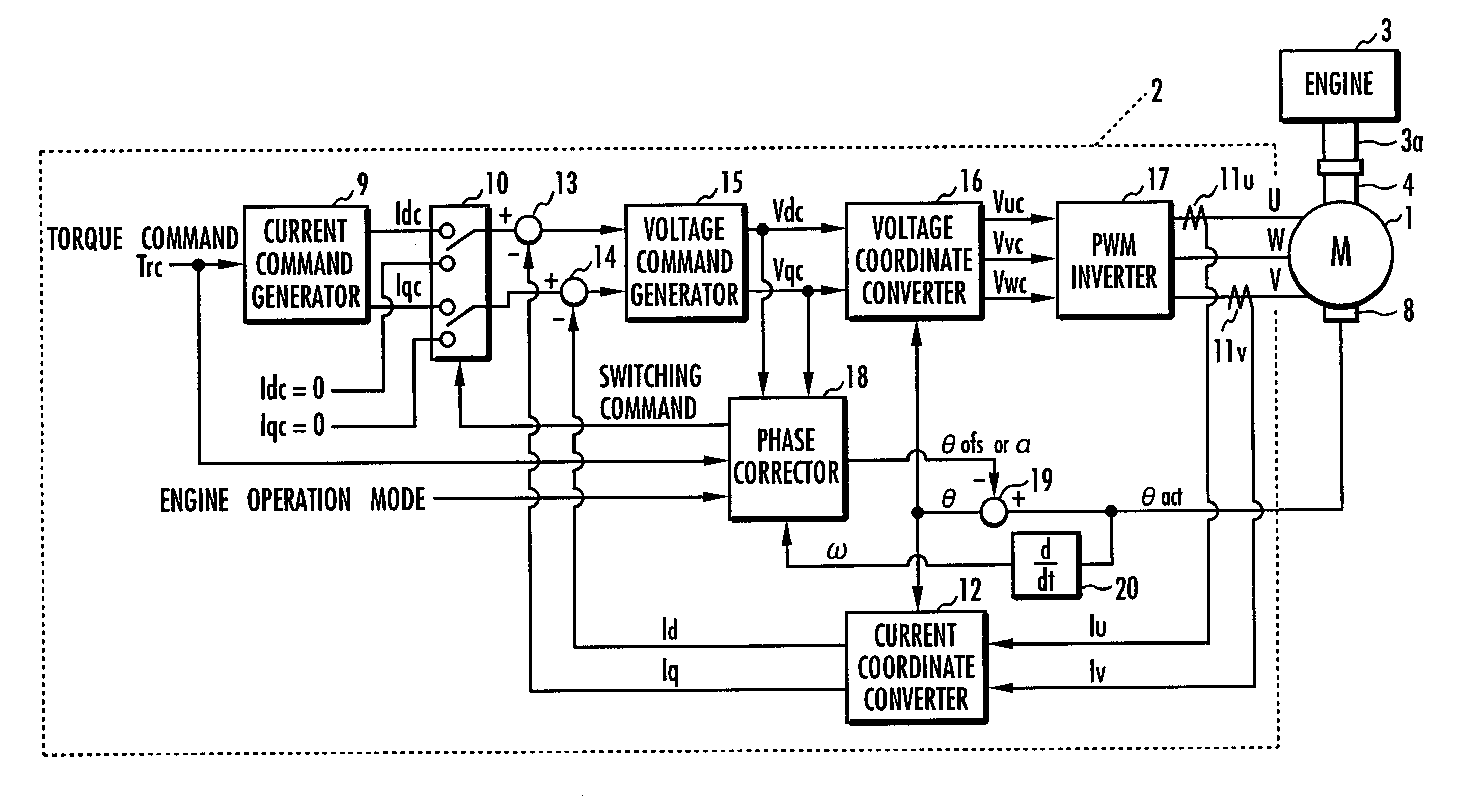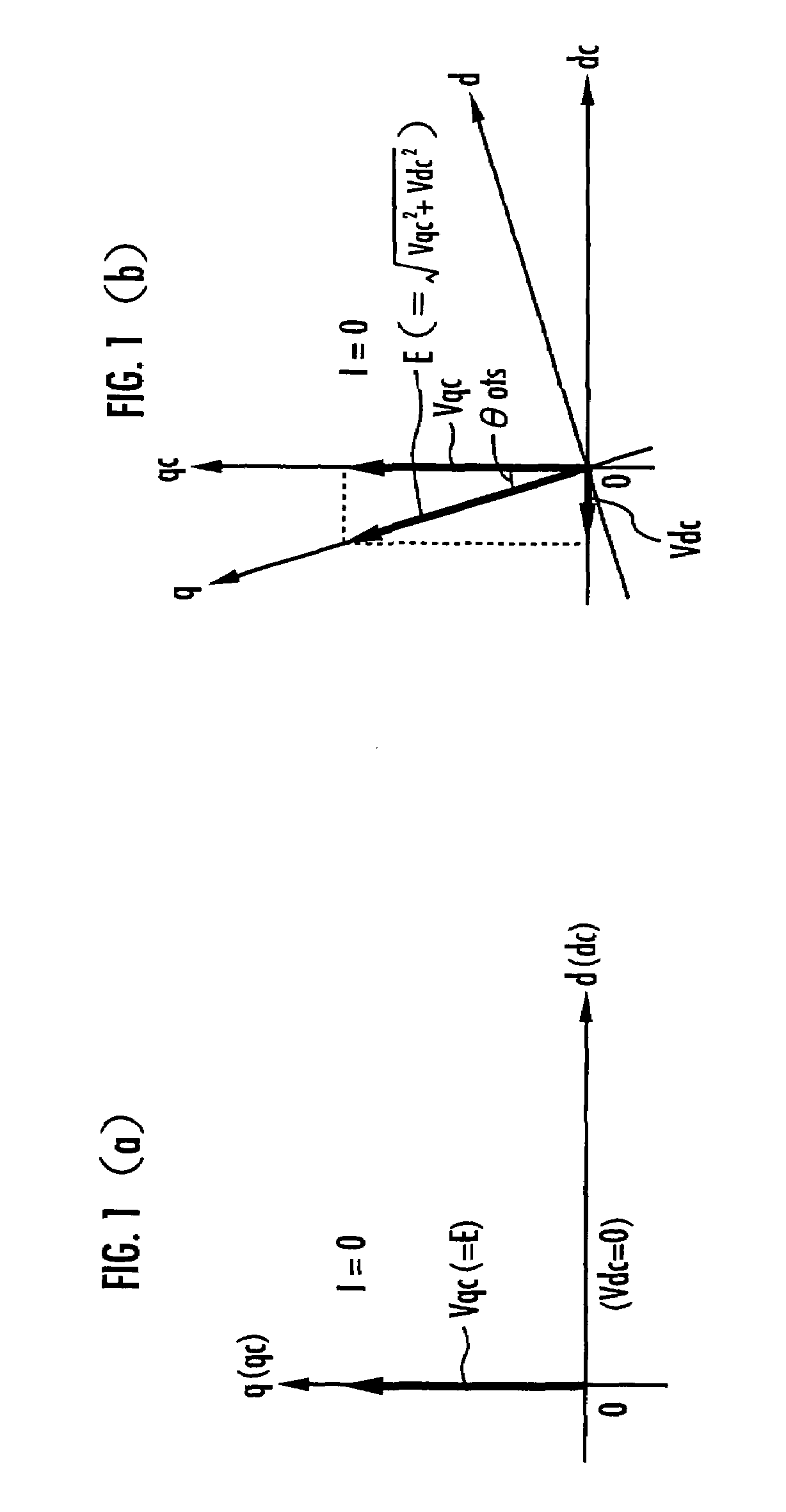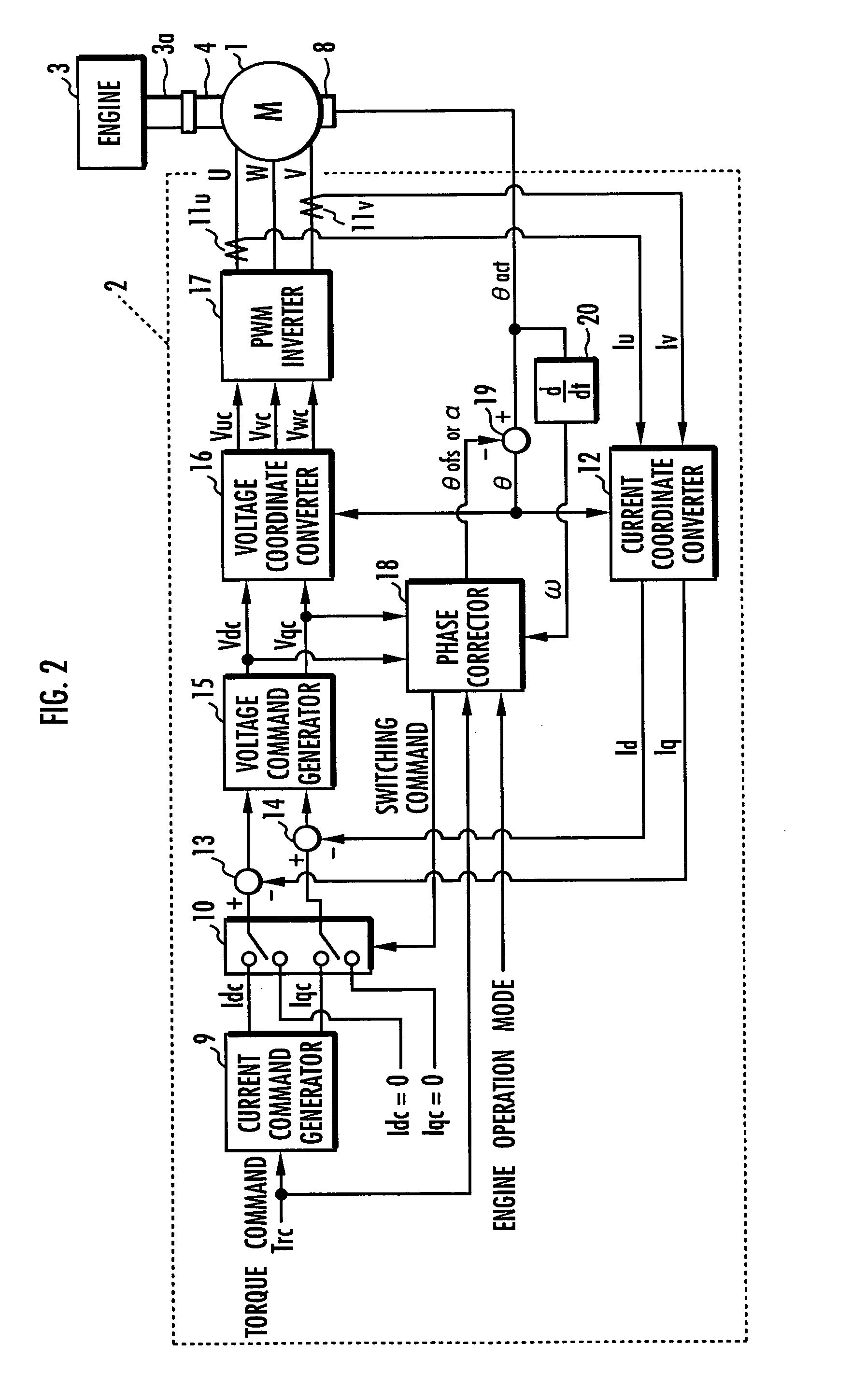Apparatus for controlling permanent-magnet rotary machine
a controller technology, applied in the direction of motor/generator/converter stopper, electronic commutator, dynamo-electric converter control, etc., can solve the problem that the disclosed technique cannot be applied to a salient-pole machine having a rotor, and the position of the magnetic pole that is detected by the magnetic pole position detector suffers an error. , to achieve the effect of efficiently controlling the operation of the permanent magnet rotary machin
- Summary
- Abstract
- Description
- Claims
- Application Information
AI Technical Summary
Benefits of technology
Problems solved by technology
Method used
Image
Examples
second embodiment
[0072] the process performed by the phase corrector 18 to determine the magnetic pole correcting angle θofs is shown in FIG. 6. The decision processing in STEP11 through STEP14 to determine whether conditions for determining the magnetic pole correcting angle θofs are satisfied or not is identical to the decision processing in STEP1 through STEP4 shown in FIG. 5. If the conditions in STEP11 through STEP14 are satisfied, then the phase corrector 18 performs the processing in STEPS 15 through 21 to determine the magnetic pole correcting angle θofs. In the process of determining the magnetic pole correcting angle θofs according to the present embodiment, the temporary setting correcting angle α is set to a plurality of values, and the magnetic pole correcting angle θofs is determined in a searching fashion. Specifically, in STEP15, the phase corrector 18 gives the current command switcher 10 a switching command for enabling the current command switcher 10 to output the d-axis current c...
first embodiment
[0077]The magnetic pole correcting angle θofs thus obtained in STEP19 represents an error angle of the detected rotational angle θact with respect to the actual rotational angle of the magnetic poles according to the principles described above with reference to FIGS. 1(a) and 1(b). As with the first embodiment, since the magnetic pole correcting angle θofs is determined while the rotational speed ω of the motor 1 is equal to or smaller than a predetermined value and is substantially constant, the magnetic pole correcting angle θofs is obtained accurately. This holds true not only if the permanent magnet 5 of the rotor 4 is cylindrical, but also if it has salient poles.
[0078]According to the present embodiment, therefore, as with the first embodiment, the magnetic pole correcting angle θofs can be determined accurately with a simple arrangement irrespective of whether the motor 1 is a cylindrical machine or a salient-pole machine. Since the magnetic pole correcting angle θofs can be ...
PUM
 Login to View More
Login to View More Abstract
Description
Claims
Application Information
 Login to View More
Login to View More - R&D
- Intellectual Property
- Life Sciences
- Materials
- Tech Scout
- Unparalleled Data Quality
- Higher Quality Content
- 60% Fewer Hallucinations
Browse by: Latest US Patents, China's latest patents, Technical Efficacy Thesaurus, Application Domain, Technology Topic, Popular Technical Reports.
© 2025 PatSnap. All rights reserved.Legal|Privacy policy|Modern Slavery Act Transparency Statement|Sitemap|About US| Contact US: help@patsnap.com



